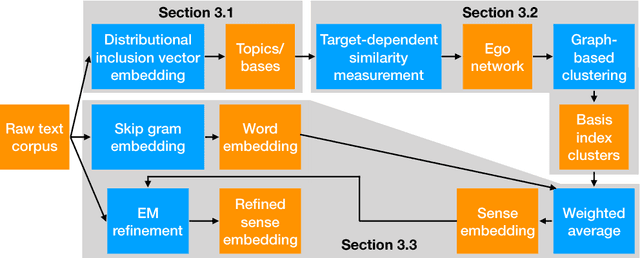Vinayak Mathur
Efficient Graph-based Word Sense Induction by Distributional Inclusion Vector Embeddings
May 29, 2018



Abstract:Word sense induction (WSI), which addresses polysemy by unsupervised discovery of multiple word senses, resolves ambiguities for downstream NLP tasks and also makes word representations more interpretable. This paper proposes an accurate and efficient graph-based method for WSI that builds a global non-negative vector embedding basis (which are interpretable like topics) and clusters the basis indexes in the ego network of each polysemous word. By adopting distributional inclusion vector embeddings as our basis formation model, we avoid the expensive step of nearest neighbor search that plagues other graph-based methods without sacrificing the quality of sense clusters. Experiments on three datasets show that our proposed method produces similar or better sense clusters and embeddings compared with previous state-of-the-art methods while being significantly more efficient.
The Rapidly Changing Landscape of Conversational Agents
Mar 24, 2018



Abstract:Conversational agents have become ubiquitous, ranging from goal-oriented systems for helping with reservations to chit-chat models found in modern virtual assistants. In this survey paper, we explore this fascinating field. We look at some of the pioneering work that defined the field and gradually move to the current state-of-the-art models. We look at statistical, neural, generative adversarial network based and reinforcement learning based approaches and how they evolved. Along the way we discuss various challenges that the field faces, lack of context in utterances, not having a good quantitative metric to compare models, lack of trust in agents because they do not have a consistent persona etc. We structure this paper in a way that answers these pertinent questions and discusses competing approaches to solve them.
 Add to Chrome
Add to Chrome Add to Firefox
Add to Firefox Add to Edge
Add to Edge